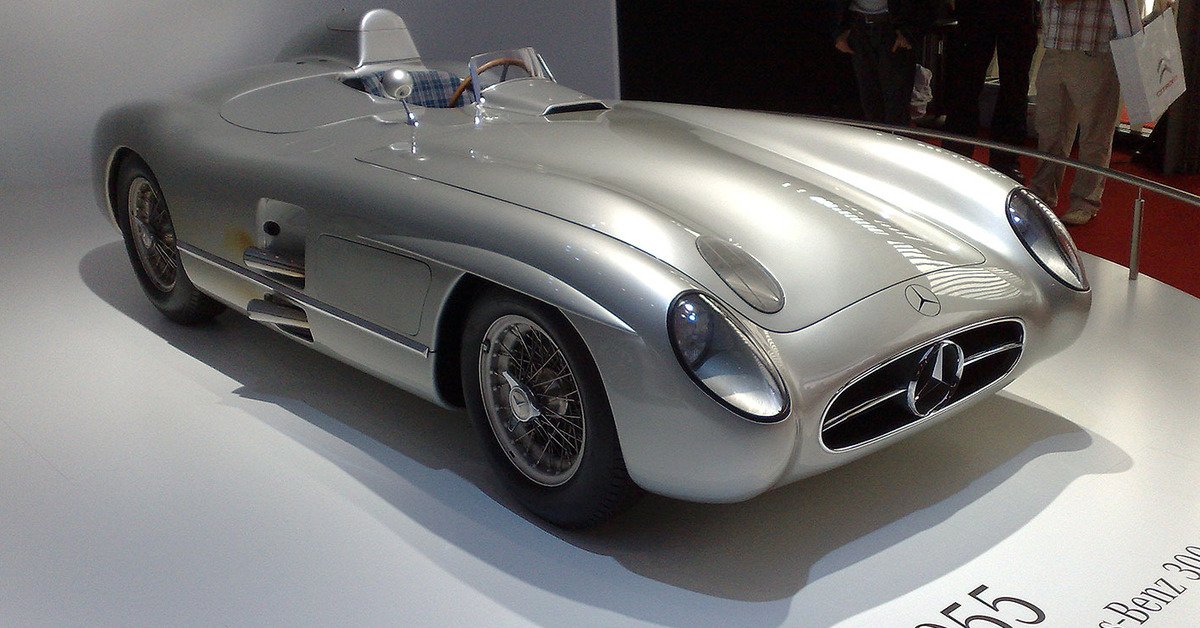During the 2010’s the name and brand of Mercedes have meant domination when it comes to motorsports. The team have successfully broken the code where powerful engines are concerned, and they capitalised on this fact by winning 8 straight Constructors’ titles from 2013 until 2021.
However, that wasn’t always the case. In fact, at one point during the 1950’s Mercedes made the headlines in a gruesome and catastrophic way, forcing them to leave the sport. This accident occurred during the 1955 version of Le Mans, where a Mercedes car caused the deaths of many and injured even more.
The tragic story of the 24 Hours of Le Mans in 1955
On June 11th, the 23rd version of the 24 Hours of Le Mans took place at the legendary Circuit de la Sarthe. The race started, and for a few hours, all was going well on the track. This went on for about 34 laps, as disaster would strike on lap 35.
As Mike Hawthorn of Jaguar was preparing to enter the pit lane, two pursuing cars driven by Pierre Levegh of Mercedes and Lance Macklin (Austin-Healey) had to swerve to avoid a crash. However, Pierre Levegh hit the back of Macklin’s car and, in doing so, became an uncontrolled object heading straight for the jam-packed grandstands on the main straight.
(Warning: This video contains real archival footage from the 1955 Le Mans disaster—the deadliest accident in motorsport history.)
Pierre Levegh was killed instantly by the impact. The car, on the other hand, went through the grandstand and took the lives of 84 spectators and injured at least 180 further people. This incident has gone down in history as the deadliest crash in motorsport and has had massive repercussions for safety from that day onwards.
The withdrawal of Mercedes following the blackest day of motorsport
Following this gruesome day, motorsport as we knew it was gone overnight. Mercedes had withdrawn from the race out of respect for the victims and their loved ones. After the race, they also abandoned all factory-supported motorsport divisions. However, Mercedes wasn’t the only entity to make immediate changes and halt processes.
France temporarily banned motor racing pending a full investigation, Germany cancelled scheduled races to impose new and updated safety standards, and Switzerland completely banned motor racing altogether. A ban that stands to this very day, except for electric vehicle racing.
The 1955 Le Mans disaster was a major crash that occurred on 11 June 1955 during the 24 Hours of Le Mans motor race.
French driver Pierre Levegh rear-ended an Austin Healy which caused his Mercedes to glide through the air. The car disintegrated, killing Levegh instantly. The… pic.twitter.com/xCDjB7jCT8
— Morbid Knowledge (@Morbidful) November 9, 2023
In the years following the incident, safety began to take a much more prominent place among the standards of motorsports. Many circuits changed their layouts, barriers and improved medical accessibility.
Nevertheless, for Mercedes, there was no going back. They disappeared from top-tier motorsport for 34 years. When they returned, they only produced engines for Sauber Mercedes in endurance racing. The German brand made a return to Formula 1 in 1994 as an engine supplier for Jaguar and owned its very own team again from 2010 until the present day.












